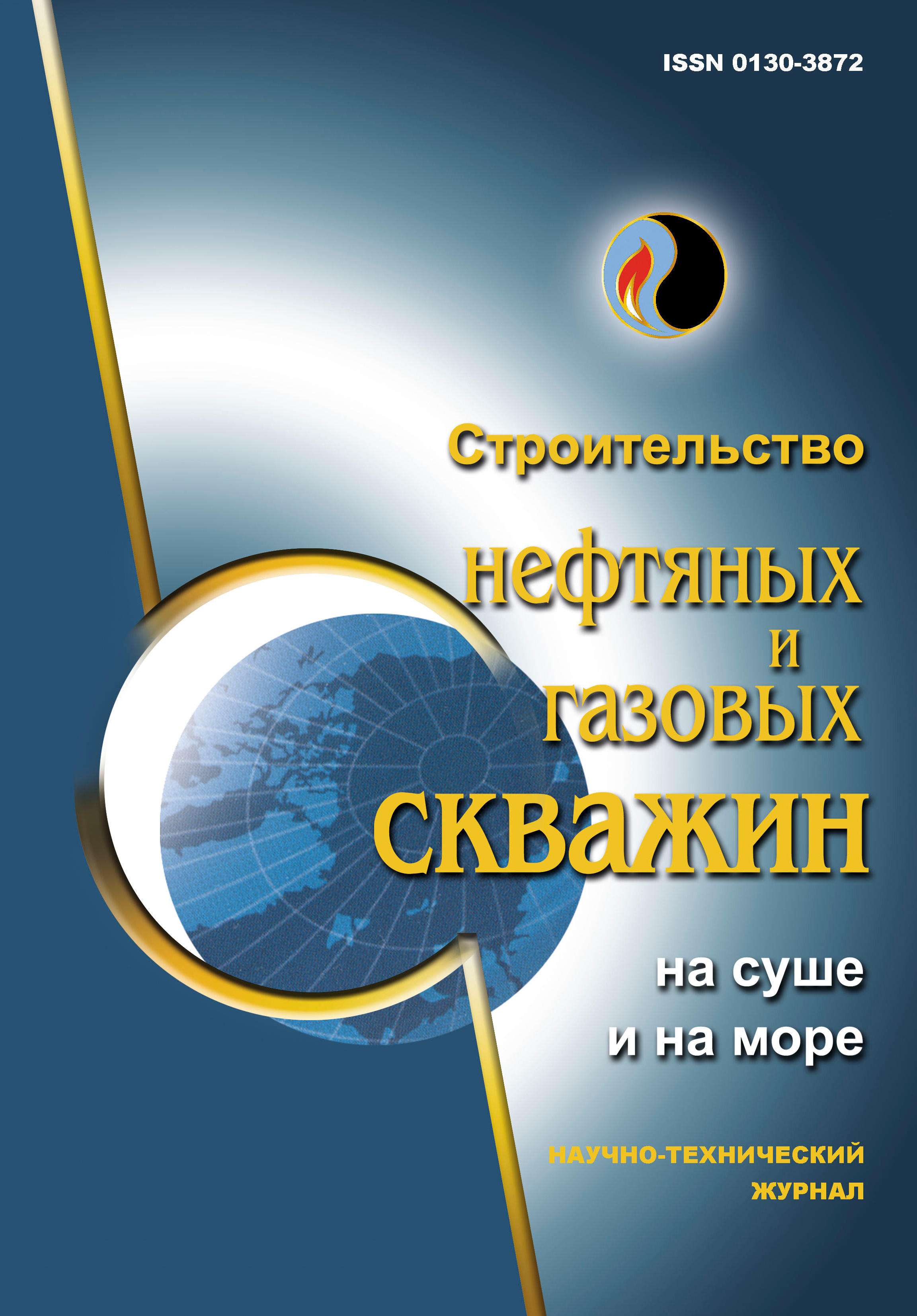Fresh inhibiting drilling fluids
UDC: 622.24.06.2
DOI: 10.33285/0130-3872-2023-2(362)-15-20
Authors:
GAYDAROV AZAMAT M. 1
1,
ORESTOVA DARYA V. 2
2
1 Gazprom VNIIGAZ, Moscow, Russia
2 SPG-ECO, Moscow, Russia
Keywords: clay rocks, inhibition, cationic polymer, environmental friendliness, fresh drilling fluids
Annotation:
Swelling clay rocks cause a number of difficulties associated with fluid production, deterioration of its properties and technological parameters, narrowing of the wellbore, stuffing box formation, trough formation, etc. All these difficulties arise as a result of the interaction of the drilling fluid with the walls of the well and cuttings. Inhibiting drilling fluids are used to prevent emerging complications when drilling in swelling clay deposits. The main clay swelling inhibitors are various salts: chlorides, bromides, sulfates. However, the introduction of salts into the drilling fluid increases not only its inhibitory properties in relation to clay rock, but also its toxicity, creating a threat to the environment. Among all inhibiting drilling fluids, fresh systems or systems with minimal salinity (up to 2 %) are the most environmentally friendly. The main difficulties that arise in the development of fresh inhibitor systems are associated with the choice of an environmentally friendly and high-quality clay swelling inhibitor. The article provides information about fresh inhibiting modifications of polycationic drilling fluids based on high molecular cationic polymers of various structures. The obtained results of laboratory tests revealed the exceptionally high inhibitory properties of fresh polycationic systems, as well as a wide range of their rheological parameters - from low viscosity to high viscosity. This fact allows the use of fresh polycationic solutions in the intervals of drilling clayey rocks by using small and large diameter bits.
Bibliography:
1. Kister E.G. Khimicheskaya obrabotka burovykh rastvorov. – M.: Nedra, 1972. – 392 s.
2. Issledovaniya glin i novye retseptury glinistykh rastvorov / V.D. Gorodnov, V.N. Teslenko, I.I. Timokhin [i dr.]. – M.: Nedra, 1975. – 271 s.
3. Ryazanov Ya.A. Spravochnik po burovym rastvoram. – M.: Nedra, 1979. – 215 s.
4. Gaydarov A.M., Khubbatov A.A., Gaydarov M.M.-R. Opyt primeneniya modifikatsiy Katburr na Astrakhanskom gazokondensatnom mestorozhdenii // Inzhener-neftyanik. – 2018. – № 2. – S. 15–21.
5. Rekomendatsii po otsenke ingibiruyushchikh i krepyashchikh svoystv burovogo rastvora / M.M.-R. Gaydarov, A.A. Khubbatov, A.M. Gaydarov [i dr.] // Heft. khoz-vo. – 2019. – № 2. – S. 33–38. – DOI: 10.24887/0028-2448-2019-2-33-38
6. Issledovaniya ingibiruyushchikh i krepyashchikh svoystv polikationnykh burovykh rastvorov Katburr / A.M. Gaydarov, N.V. Solov'ev, A.A. Khubbatov, Kh.N. Kurbanov // Inzhener-neftyanik. – 2020. – № 2. – S. 25–31.
7. Safarov A.Kh. Snizhenie tekhnogennoy nagruzki na okruzhayushchuyu sredu otkhodov neftekhimicheskogo proizvodstva: dis. … d-ra tekhn. nauk: 03.02.08. – Ufa, 2019. – 303 s.
8. Sangadzhieva L.Kh., Borlikov G.M., Sangadzhieva O.S. Landshaftno-geokhimicheskiy analiz izmeneniya prirodnykh sred v rayonakh neftegazodobychi (na primere Chernykh Zemel' respubliki Kalmykiya) // Izv. vuzov. Severo-Kavkazskiy region. Ser.: Estestvennye nauki. – 2005. – № 3(131). – S. 79–86.
9. Zavorotnyy V.L., Lyushin M.M., Zavorotnyy A.V. Otsenka vozdeystviya na okruzhayushchuyu sredu soley pri stroitel'stve skvazhin // Proektirovanie i razrabotka neftegazovykh mestorozhdeniy. – 2020. – № 2. – S. 46–54.

